#kings of dalriada
Photo
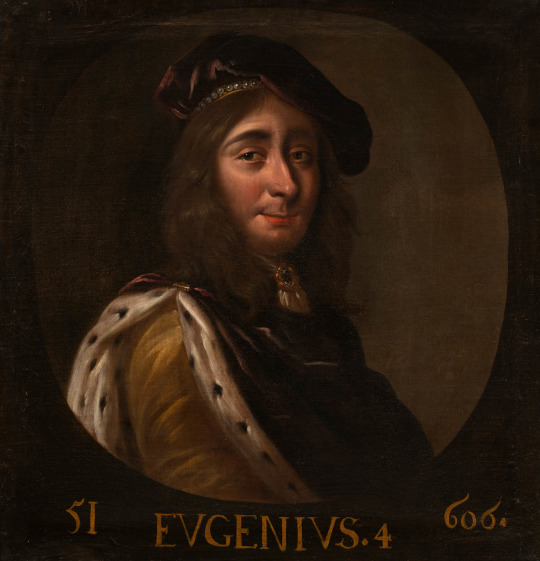
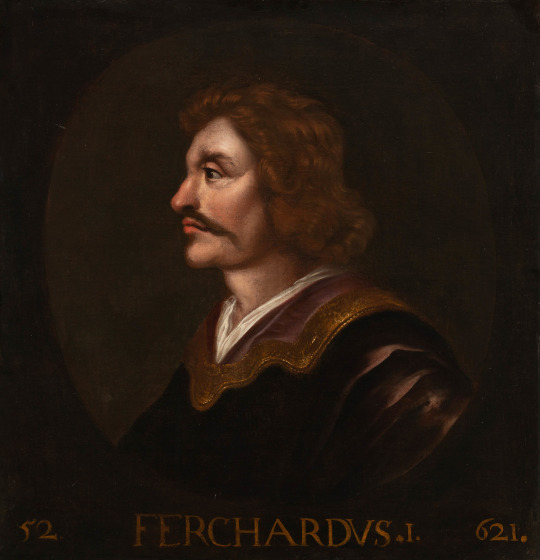
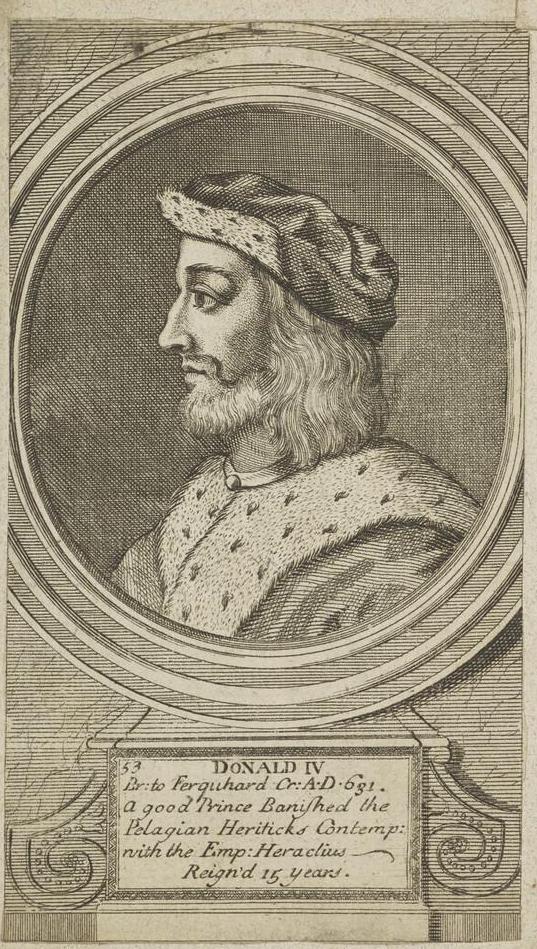
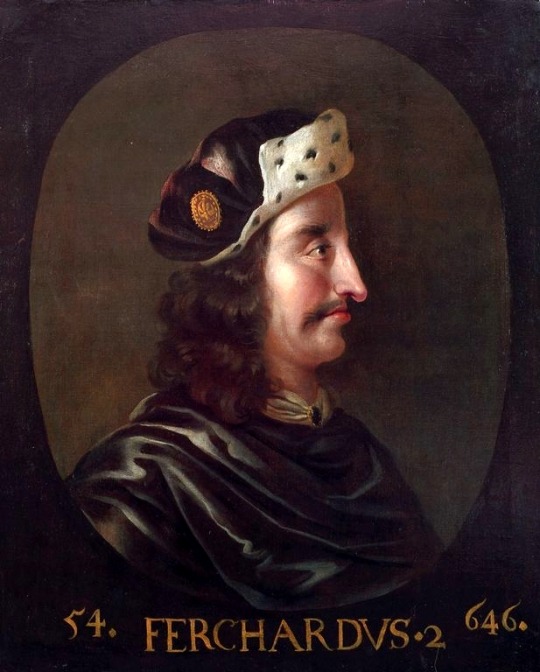
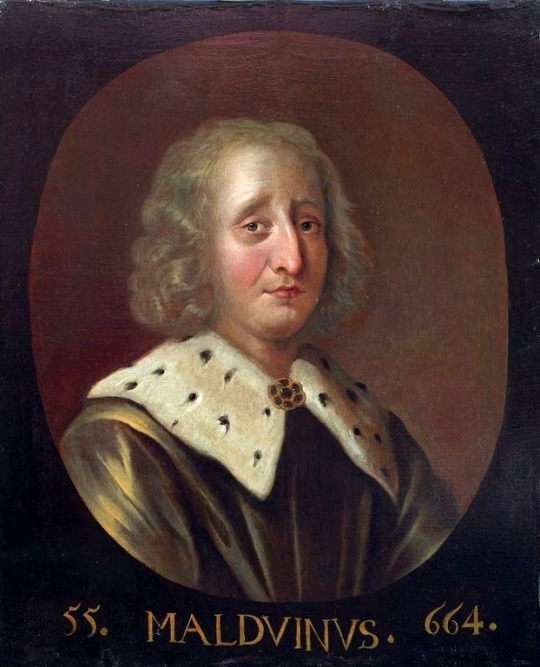
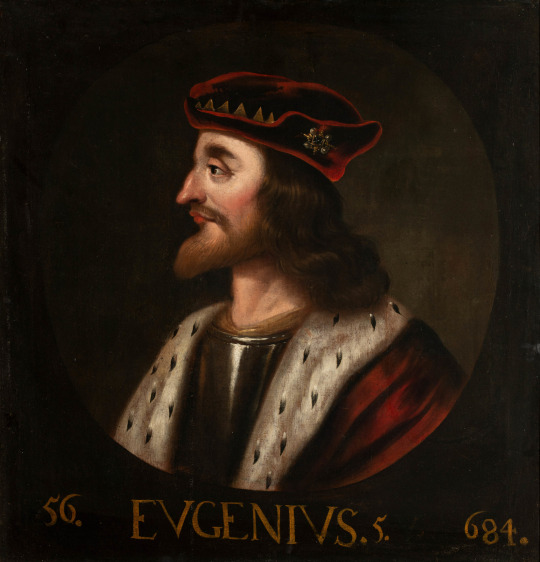



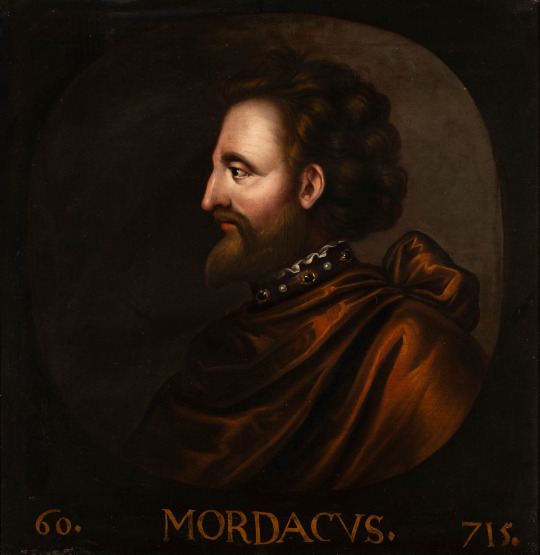
Legendary Kings of Scotland.
51. Eugenius IV (Eochaid Buide, King of Dál Riata from around 608 until 629).
52. Fearchair I (Ferchar mac Connaid, King of Dál Riata from about 642 until 650).
53. Donaldus IV (Domnall Brecc or Donald the Freckled, King of Dál Riata, from about 629 until 642).
54. Ferchardus II (Ferchar Fota or Ferchar the Tall, probably King of the Cenél Loairn of Dál Riata, and perhaps of all Dál Riata)
55. Maldvinus.
56. Eugenius V.
57. Eugenius VI.
58. Amberkelethus (Ainbcellach mac Ferchair, King of the Cenél Loairn of Dál Riata, and perhaps of all Dál Riata, from 697 until 698, when he was deposed and exiled to Ireland).
59. Eugenius VII (Likely duplicates Eugenius VI; King of Dál Riata from 726 until 733).
60. Mordacus (Muiredach mac Ainbcellaig), King of the Cenél Loairn, and of Dál Riata, from about 733 until 736.
#kingdom of scotland#list of scottish kings#list of monarchs of scotland#rerum scoticarum historia#kingdom of dalriada#kings of scotland#kings of dalriada#scottish dna#eugenius iv#eugenius v#eugenius vi#eugenius vii#ferchardus ii#maldvinus#amberkelethus#mordacus#donaldus iv#king donald#jacob jacobsz de wet ii#richard cooper#george buchanan#list of monarchs
10 notes
·
View notes
Text








Trusty's Hill Pictish Symbols Rock Art Panel, Gatehouse of Fleet, Dumfries and Galloway, Scotland
A first visit for me! Pictish Symbols in Dumfries and Galloway?
Pictish symbols at Trusty's Hill are thought to date to sometime between 500 and 900CE, when south-west Scotland was inhabited by Britons, not Picts so archaeologists and historians have long since puzzled as to why they were carved here, so far from the Pictish heartlands of north-east Scotland.
The Pictish symbols at Trusty's Hill are inscribed into an outcrop of natural rock on the approach to its summit. While no-one yet knows exactly what the meaning of Pictish symbols are, specialists consider that they relate to individual and cultural identity. While the double disc and z-rod symbol is quite a common symbol in other Pictish carvings, the monstrous sea-beast and sword are unique to Trusty's Hill. Specialist analysis of the carvings at Trusty's Hill concludes that the symbols here are genuine and were very likely made by a local Briton familiar with Pictish art but confident enough to create their own symbols.
The Pictish Carving at Dunadd is particularly relevant to that at Trusty's Hill because like at Trusty's Hill, but unlike Din Eidyn, it is carved into a natural rock outcrop and therefore in its original position. The Pictish boar symbol at Dunadd is carved into the inauguration stone of the kings of Dalriada. Like Trusty's Hill it is opposite a rock-cut basin and at the entranceway to the summit. The layout of Dunadd, with an upper citadel and lower precincts, is also similar to Trusty's Hill. Because of this similar archaeological context, it is likely that the Pictish symbols and votive well at the entranceway to Trusty's Hill played some part in royal inauguration rites too. Altogether, the archaeological evidence now recovered from Trusty's Hill - the fine metalworking and high status metalwork, the imported pottery from the continent, the fortifications and the Pictish inscribed stone and votive well - mark this site as a royal site, as these same archaeological attributes are characteristic of other royal sites in Dark Age Scotland. But if Trusty's Hill was of royal predominance over this region of Scotland during the sixth century AD, what was the name of the kingdom its kings ruled?
#pict#pictish#pictish art#pictish symbols#ancient sites#ancient cultures#ancient crafts#symbols#z rod#archaeology#pictish beast#rock art#design#Scotland#dumfries and galloway#outdoors#wild places
91 notes
·
View notes
Text
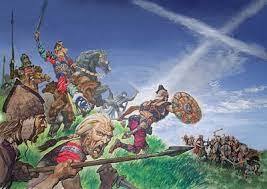

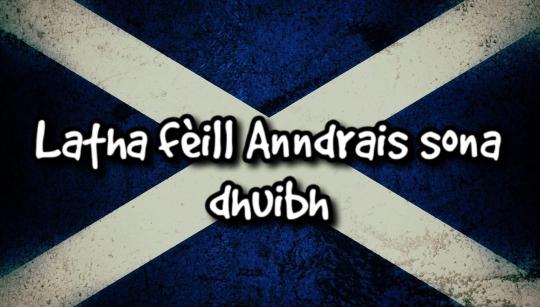
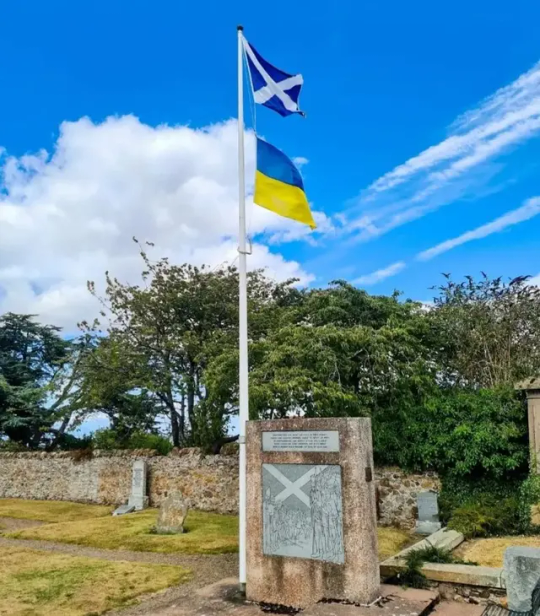

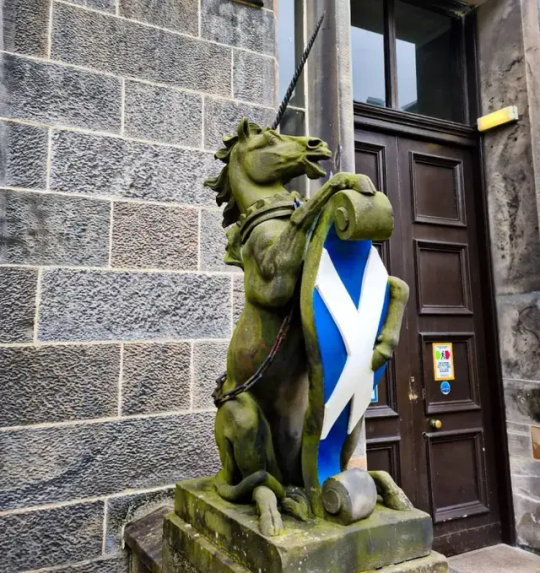
Happy St Andrews Day.
As part of our Patron Saint’s Feast Day the Scottish Saltire is proudly flown and many people add it to their posts on social media to celebrate the day, but how did Scotland adopt the saltire?
There is no actual date, or in fact nothing in our written history of the time, but legend has it that in AD 832 the king of the Picts, ‘Aengus MacFergus’, ( Anglified to Angus but some stories say Hungus) with the support of 'Scots’ from Dalriada, won a great battle against King Athelstane of the Northumbrians. The site of the legendary battle became known as Athelstaneford in present-day East Lothian.
St Andrew visited the Pictish leader in a dream before the battle and told him that victory would be won. When the battle itself was raging, a miraculous vision of the St Andrew’s Cross was seen shining in the sky, giving a boost to the morale and fighting spirit of his warriors. The result was a victory over the Saxons, and the death of Athelstan. Thus, after this victory, according to the tradition, the Saltire or St Andrew’s Cross became the flag of Scotland, and St Andrew the national patron saint.
While there is no written reference to the battle in Scotland from the period it was said to have taken place, this is not surprising, as it was a time for which we have little or no documentation for anything. The earliest written mention of the Battle of Athelstaneford in Scottish history comes from years later in the newspapers of the day, if you follow my posts then you know I dip into these “Chronicles from time to time, the first one to mention Athelstaneford is the Scotichronicon, written by the Scottish historian Walter Bower.
The Scotichronicon has been described by some Scottish historians as a valuable source of historical information, especially for the times that were recent to him or within his own memory. But he also wrote about earlier times, and this included the battle at Athelstaneford.
Bower’s account includes the scene where Aengus MacFergus is visited by St Andrew in a dream before the battle. He was told that the cross of Christ would be carried before him by an angel, there was no mention of a St Andrew’s Cross in the sky in this version. It was in later accounts, from the 16th centuries onwards, that we have the description of an image of St Andrew’s Cross shining in the sky
Bower was writing in the early 1400s. The bitter and bloody struggle to retain Scotland’s independence was not just a recent memory but also a current reality for him. Parts of Scotland were still occupied by England, and Bower had been involved in raising the money to release Scotland’s king, James I, from English captivity.
Also, Scotland’s early historical records and documents had been deliberately destroyed during the invasion by the English king Edward I. This was done in part as an attempt to remove historical evidence that Scotland had been an independent kingdom. The idea was simple: take away a nation’s history and you strip it of its identity and justification for its independent existence. The theft of the Stone of Destiny was part of this process, the Black Rood which was believed to contain a piece of the Cross Jesus was crucified on was also removed, I have covered both these in previous posts.
Part of Bower’s motivation in writing his Scotichronicon was to help restore this stolen history. He was a scholar and a man of the church. In his time, the figure of St Andrew had become a prominent presence in Scottish society.
The greatest church building in the land during his time was the Cathedral of St Andrew, which housed relics of St Andrew himself. It had taken over a hundred years to build and wasn’t formally consecrated until 1318, just four years after Bannockburn. The ceremony of course included Robert the Bruce and at it thanks was given to St Andrew for Scotland’s victory.
Less than 100 years after this, in 1413, the University of St Andrews was established and Walter Bower was one of its first students. By this time, the Cathedral of St Andrew was a place of pilgrimage, with thousands travelling there to venerate the saint’s relics. A pilgrimage route from the south took in the shrine of Our Lady at Whitekirk, not far from the site of the battle, and many pilgrims took a ferry across the Firth from North Berwick, where the ruins and remains of the old St Andrew’s Kirk can still be seen close to the Scottish Seabird Centre.
So as he sat down to write his history of earlier times, he was able to trace this connection to St Andrew, using the limited earlier written accounts, such as those of earlier Chronicler I’ve mentioned before, John Fordun, who lived in the 1300s. While Fordun doesn’t specifically mention the location of Athelstaneford, he records a battle which took place between the Picts led by Aengus and a force from the south led by Athelstan, and said the location of the battle was about two miles from Haddington. The account of St Andrew appearing in a dream to Aengus is also described by Fordun.
This creates a powerful link to the development of the written version of the story. Let’s remember Bower came from what is now East Lothian. Let us also remember that people in the early centuries stored and passed on much of their historical knowledge not in the written word but in memory and handed down oral traditions. People told stories, remembered them and told them to the next generation. Undeniably, some details would be forgotten or changed over time, but the bones of the story would be handed down. And that would include reference to locations of significant events in the local landscape.
Bower will have had access to this rich oral tradition of local stories based on handed-down collective memories of past events, which is perhaps why he was able to name the location. The later writers who added to the story of the battle will likewise have found new sources in the oral tradition to add to the narrative. Even in the 19th century, cartographers mapping the area were able to identify locations traditionally associated with the battle from local people who were custodians of ancestral memory.
This is how the story of the Battle of Athelstaneford and its connection with St Andrew and the Saltire has evolved.
The village is home to the National Flag Heritage Centre which occupies a lectern doocot built in 1583 and rebuilt in 1996. It is at the back of the village church. Today the village is surrounded by farmland and has little in the way of amenities. Tourists can follow the "Saltire Trail", a road route which passes by various local landmarks and places of historical interest.
Athelstaneford Parish Kirk has a connection with the subject of my post last week, author Nigel Tranter, who was a prominent supporter of the Scottish Flag Trust. He married in the church, and in April 2008 a permanent exhibition of his memorabilia was mounted in the north transept of the church. Items include a copy of Nigel Tranter's old typewriter, a collection of manuscripts and books, and other personal items. The display was previously at Lennoxlove House, and prior to that at Abbotsford House, the home of Sir Walter Scott.
26 notes
·
View notes
Text
SAINT OF THE DAY (June 9)
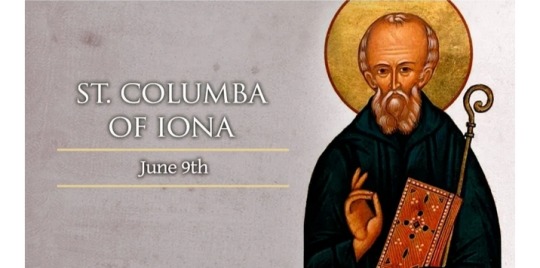
On June 9, the Catholic Church commemorates the sixth-century Irish monk and missionary, Saint Columba of Iona, also known as St. Columcille.
One of Ireland's three patron saints (together with Saint Patrick and Saint Brigid), he is also sometimes called the “Apostle of the Picts” for his evangelization of Scotland.
He should not be confused with St. Columbanus (or Columban), a different Irish monk and missionary who lived slightly later and ended up in Italy.
Columba was born during 521, descended from royalty through his father.
He was taught and mentored by the priest who baptized him. He later attended a monastic school founded by Saint Finnian of Moville.
His own life as a monk began at the school where he was also ordained a deacon.
The deacon went on to spend time in a different monastery and school run by another Finnian, Saint Finnian of Clonard.
Columba became a priest during this period, and along with eleven others from this same institution, he would be known as one of the “Twelve Apostles of Ireland.”
Columba also studied with Saint Mobhi of Glasnevin, before a disease epidemic forced him to return to his ancestral homeland of Ulster during 544.
He spent the next 15 years traveling, preaching, and founding monasteries.
In 563, it is not clear why Columba left Ireland. By some accounts, he was simply going to preach the word of God.
Others claim that he had become involved in a battle between warring tribes, before repenting and taking on foreign missionary work as a penance.
On the island of Iona, located on Scotland’s northwest coast, Columba and his group of companions built simple monastic quarters and a church for themselves.
The priest-monk’s first missionary work was in the region of Dalriada, whose Celtic Christian inhabitants were lacking solid religious instruction.
His next effort was to convert the Picts of northern Scotland, a task that would take up most of the rest of his life.
He began by gaining entrance to the castle of King Brude, where the locked gates are said to have miraculously opened when the sign of the Cross was made.
The king welcomed the missionaries, believed the Gospel, and was baptized.
Columba’s evangelization of northern Scotland continued over the next three decades.
He and his companions met with some resistance from the native pagan Druids, but on the whole, they found remarkable success in spreading the Catholic faith and building up a network of churches and monasteries.
The island monastery at Iona remained his home base. It drew pilgrims looking to benefit from the priest-monk’s wisdom and his prayers.
He remained in touch with the Irish Church, making many trips back until he became too weak to travel.
Even in old age, Columba maintained an intense routine of prayer, fasting, and study.
After giving a final blessing to his monastery on 8 June 597, he died sometime in the early hours of the following day.
#Saint of the Day#Saint Columba of Iona#St. Columcille#Apostle of the Picts#Twelve Apostles of Ireland
3 notes
·
View notes
Text
@lyon-beast-king

“He went to see Noah......Pagaga, you both used the infoma.........you did, alright.......” So pulling both task without a hitch, it was damn miracle that they had worked out with little information with Dalmasca and it’s current events of the remaining IVth legion. Breaking Lyon out of prison was easy but getting to Noah should have been harder but then again, things changed as Menenius placed a hand on the burn as it flared a slight bit. Yet hearing from the lala that Lyon had killed Noah after talking with him, at this point he wasn’t surprised given what Noah had said about him from what Pagaga had said. “In that case, head on back since I’m sure Lyon would like a nice bath and a decent meal for once..... you know where the hide out is and where to land so see you both soon.” With that, he cut the linkpearl off as he gave out a shuddery breath since gods.....he was about to see the Beast King after half a year.....after his supposed death on the Dalriada....
- fateful day six months ago-
Having stumbled awake as he struggled to get up, the moment he heard the blast go off, he felt the adrenaline going through his body as it took him a second to realize that the lazer was heading straight for Lyon which meant.....oh no.... oh seven hells, he would lose the elder! “Lyon!” That was when his body started moving on his own and his mind then followed, the only thought at that time was ‘Protect Lyon’ and that’s it. Throwing his arms up as he watched the lazer blast incoming and wanted to chuckle as damn....he wished he could have had a final conversation with the elder instead of this being his end, he wished that they had a chance to show the beast king how much he loved him, how he meant the world to him. All those thoughts disappeared once he felt the blast hit him even if it was for the briefest of moments but gods.....he felt like Sautauvoir and Albeleo combined lite him on fire with their most powerful magic, piercing the armor like it was nothing and then....it was over.
Smoke rose up around him as Menenius turned his head with what energy he had left, eyes blurring but enough to see that Lyon was unharmed, he was safe and he gave him one final gentle smile that he knew the other adored as the world started to black out. Lyon.... his love....if he could apologize and tell him that he loved him he would have but him moving his head took all the energy at that moment. And then....nothing, he assumed he heard screaming but honestly he didn’t remember. Though there had been a time when he woke up for the briefest of moments, even though the view was severely blurring and words were muffled, he could still make out Lyon and Pagaga as they were making plans? Honestly he couldn’t tell as he passed out right afterwards once more which he found out resulted in him being in a coma state for a good month.
- present day -
Breathing out, right.... they both would be here soon and perhaps making some food would be the best option, something light on his stomach until Lyon wanted more. Thankfully Pagaga had gone hunting the previous days so that helped out a lot. Lifting his hand up, they were shaking though from what? The nervousness of seeing the elder once more? Or him excited about the fact that he was going to be reunited with him once again? Either way....... he missed the beast king so much.
#Reunion time#{We bare our fangs at each other but at the end of it all you are the only one on my mind]#Menenius/Lyon#Canon au 1#[The world tried to kill me. Now it's us against the world]#Lyon-beast-king#{The mighty King of Beast still a major pain in the ass}
23 notes
·
View notes
Text
What Should I Write Next?
Thank you to everyone for your very kind words on the conclusion of Don’t Let Me Fall. Since I managed to wrap that story up before the holidays, and since we’re due for the first big snowstorm of the season that will keep me indoors all weekend, I’m trying to decide what to write next.
I am not promising to write the most popular choice, but I am interested to know how readers feel about the following contenders:
Dal Riada (working title) - a WIP that is a retelling of Outlander with Claire falling from the 1860s back to the proto-Gaelic kingdom of Dalriada in 806, where Seumas (Jamie) is the nephew of the king. It also tells the story behind the Woman of Balnain folktale that Claire hears sung in Outlander. Omniscient POV. I’ve written 6 chapters (about 19,000 words) and done a ton of historical research, but I need to revisit the plot and do a significant re-write of what’s there. This is the story I most want to write, but it will take a looong time to do it justice. Likely completion: Summer 2023.
Laredo (working title) - a WIP set in the American southwest in the 1980s. Jamie is a vaquero (Spanish-American cowboy) on his family’s ranch in southern Texas when Dr. Claire Beauchamp’s car breaks down in his one-saloon town. He’s a fugitive from the law, she’s running away from financial and personal ruin, and they come to each other’s aid. Claire POV. This is the story closest to completion. I’ve got 13 chapters (about 37,000 words) written, and there’s just one major plot hole to fill and a lot of polishing before it’s done. Likely completion: January/February 2023.
West End Girl - a WIP set in mid-1980s London during the height of the cocaine/heroin epidemic. Claire is a wealthy Mayfair society girl who witnesses something she shouldn’t. Jamie is the leader of a Docklands street gang called the Clan who protects Claire from Black Jack Randall, her boyfriend’s cousin. It’s a lot darker than my usual stuff. Omniscient POV. This one is about half-written (12,000 words) but still needs some plotting and some rework as well. Likely completion: March 2023.
The Man from Black Water - another wacky fic idea that came to me not long ago. A cross-over between Outlander and the 1980s movie The Man from Snowy River, retold in 1880s Scotland rather than 1880s Australia. The plot would be almost identical to the movie (for those that have seen it) and I can practically recite that movie from memory, so this is a quick hit of feel-good fic. Likely completion: January/February 2023.
24 notes
·
View notes
Text
Ghosts Stars Names
Clarence - Clear/ One who lives near the River Clare
Clarence had both Scottish roots in the ancient kingdom of Dalriada and Irish heritage as it may be in relation to the Clare River in the West of Ireland. It could also be in relation to the title Duke of Clarence from the 14th century, implying royal heritage. It is a name that was very popular during the late 19th century and early 20th century, so he may have been born around the time Fanny was living on Button House. He also may have died before Captain was stationed at Button House and thus would’ve been around during the 1920s-1938. It’s also possible he’s from the late 14th century around the time of Edward IV and Richard III’s reigns.
Since all the names at least briefly allude to the character’s personality or status within their lives, Clarence may have been some kind of moral guidance or advisor, due to his name being associated with clear and water. He could’ve been a calm person who went with the flow and thus would’ve been a compatible friend for Robin. His name also being a title given to a 14th century royal prince who married someone of the Claire family may also imply royal heritage.
Godric - God ruler
Godric originated in Anglo-Saxon England, with many saints and sheriffs of the 11th century having that name. The name could form from anywhere between the 5th and 11th centuries. Like most names during that time, it holds religious significance. The name died out after the Norman conquest, so it is likely Godric was from before William the Conqueror, so at least before 1066. He would have come from Early Medieval Europe.
Since his name is in relation to God, there isn’t much we can gain from its meaning. Similar to the plague ghosts his name is a product of his time and would mostly be religious in some way. However, he may have been around during the time of the Romans invading, or a bit later when the seven kingdoms were established. We’ll never really know until we’re shown him. He could be of German descent.
Elizabeth - God is my oath
Elizabeth has roots in both Hebrew and Greek, coming from the Hebrew words shava meaning oath and el meaning god. It was a name more common in Eastern Europe from the 12th century. In Medieval England it was sometimes used to honour a saint. Due to Elizabeth I’s reign it became very popular during the 16th century, though it stayed a top ten name until 1945.
The name Elizabeth is was also a Dutch family name Elisabeth, which may imply Dutch heritage. She could have either been from around the Middle Ages, during Elizabeth I’s reign, or just after death. The name implies importance and someone who is very regal, so she may have been part of the aristocracy during James I/VI’s reign. She may have been around a similar time to Humphrey, or may have been born in the second half of Elizabeth’s reign.
William - Resolute protector/strong-willed warrior
The name is of Germanic origin but was also popularised in England by the reign of William the Conqueror, it is also derived from the name Wilhelm. It is comprised of the elements Wil, meaning will of desire, and helm, helmet or protection. Similar to Elizabeth, William is a name that has been popular for centuries and has stayed in the top ten most common. It is typically knows as of old Norman origin.
His name implies he may have been a soldier or warrior of some sort, perhaps having fought in a war. It may also imply the polar opposite, that he was supposed to be a soldier but deserted the army he was a part of. Either way, he may have been named after the arrival of William the Conqueror or departure as a tribute when the king died. The ghost could also possibly be from that time but be compartment unrelated to conflict, being named later on during the reign of William and Mary or William IV.
#bbc ghosts#we know nothing about them so speculators of course#fanny button#the captain#thomas thorne#julian fawcett#pat butcher#humphrey bone#robin bbc ghosts#kitty bbc ghosts
23 notes
·
View notes
Text
Lia Fáil
Also known as the Stone of Destiny or Speaking Stone
Some Scottish chroniclers, such as John of Fordun and Hector Boece from the thirteenth century, treat the Lia Fáil the same as the Stone of Scone in Scotland.
According to this account, the Lia Fáil left Tara in AD 500 when the High King of Ireland Murtagh MacEirc loaned it to his great-uncle, Fergus (later known as Fergus the Great) for the latter's coronation in Scotland. Fergus's sub-kingdom, Dalriada, had by this time expanded to include the north-east part of Ulster and parts of western Scotland. Not long after Fergus's coronation in Scotland, he and his inner circle were caught in a freak storm off the County Antrim coast in which all perished.
The stone remained in Scotland, which is why Murtagh MacEirc is recorded in history as the last Irish King to be crowned on it.
However, historian William Forbes Skene commented: "It is somewhat remarkable that while the Scottish legend brings the stone at Scone from Ireland, the Irish legend brings the stone at Tara from Scotland
0 notes
Text
Rules, tag 10 followers you want to get to know better!
Tagged by: @sansloii (thanks mang)
Tagging: steal it!

Name: bear, will
Star Sign: aquarius? idk I feel like these all changed at some point but whatever
Height: 6'-2" im tol
Middle name: Brady, after my grandma
Put your itunes/spotify/youtube on shuffle. What are the first 6 songs that popped up?
children of the city - mili
napisten hava - dalriada
call my name - the unlikely candidates
drivin' me bananas - brian tyler
eyes on the king - benn
chances - backstreet boys
Ever had a poem or song written about you: no, but, there was that time way back in mid/high school when I went to summer camp and the one girl who had a one sided crush on me got upset when I ditched the dance, so she sang a breakup song for the talent show!
When was the last time you played air guitar: the better question is when is the last time I picked up my bass and ahahhah... ha... my hobbies are crippled (I sing a lot, though- dont really do air guitar)
Who is your celebrity crush?: n/a, I dont follow that kind of thing
What’s a sound you hate; sound you love?: a sound I hate is grinding metal, especially when its coupled with the image of grating it across your teeth or something like aghaghssdlgh no thanks. a sound I love though? windchimes, gentle breezes ahhh
Do you believe in ghosts?: no lmao
How about aliens: seems more likely to be real than it is NOT given probability and how fuckhueg this universe is. if, we're considering any kind of outside life as 'aliens'... do I think some have been here? seems insanely improbable given the ramifications of contact
Do you drive?: soooooo much. a lot less now with my current work but my old job had me driving hundreds of miles a week so I'd say I'm pretty versed in it.
if so have you ever crashed: I've had some... really close calls on really bad stuff happening, but no. Just a couple fender bumps.
What was the last book you read?: The Stranger, so I could learn more about Meursault. That was a trip.
Do you like the smell of gasoline: Yes. I am guilty of taking a larger breath than necessary in equipment sheds.
What was the last movie you saw?: The mario movie! Watched it again last night in a gc. The music choice really does kill a lot of the charm. And they had original music I dont...guh.
What’s the worst injury you’ve ever had?: Hmm... I've mostly avoided most physical catastrophes, but I've been subject to a couple nasty things. First was accidentally stabbing myself with a pocket knife while cutting a cardboard box. Fun! Then there was the time I was walking in a drained farm pond without proper footwear and a piece of glass sliced open the side of my ankle. Both very painful. Oh, and then a couple dog bites. x:
Do you have any obsessions right now?: Idk I feel like the only thing that really gets me hyped up lately is writing and getting in shape haha, wouldnt call either an obsession tho. I'm not a gym bro, just work out from home but the feeling of improvement has been intense as of late. Lots of positive vibes at my self-image. And yeah. Writing. Keeps me from doing most of my other attempted hobbies :V
1 note
·
View note
Text
Today, I'm delighted to welcome Rowena Kinread and her new book, The Scots of Dalriada to the blog HistoricalFiction #ScottishHistoricalFiction #BlogTour #TheCoffeePotBookClub
Today, I'm delighted to welcome Rowena Kinreead and her new book, The Scots of Dalriada to the blog HistoricalFiction #ScottishHistoricalFiction #BlogTour #TheCoffeePotBookClub
@RowenaKinread @cathiedunn @rowenakinread @thecoffeepotbookclub
The Scots of Dalriada
The Scots of Dalriada takes place in 5th century Ireland and Scotland and tells the fictional story of the legendary king Fergus Mór. Recorded Irish history begins with the introduction of Christianity and Latin literacy, beginning in the 5th century. Most of my research however, relied on sources written much later. First and foremost, Studies in the History of Dalriada by…

View On WordPress
0 notes
Photo
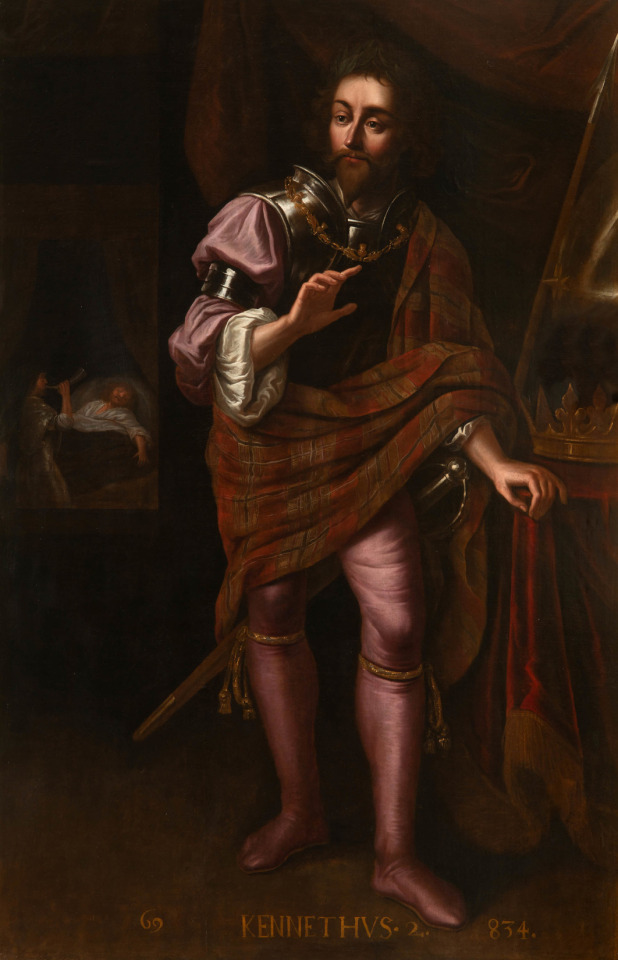
Legendary kings of Scotland by James de Witt.
69: Kennethus II (Kenneth MacAlpin)
Kenneth MacAlpin (810-858) or Kenneth I was King of Dál Riada (841–850), King of the Picts (843–858), and the first King of Alba (843–858) of likely Gaelic origin. He inherited the throne of Dál Riada from his father Alpín mac Echdach, founder of the Alpínid dynasty. Kenneth I conquered the kingdom of the Picts in 843–850 and began a campaign to seize all of Scotland and assimilate the Picts, for which he was posthumously nicknamed An Ferbasach ("The Conqueror").
Kenneth I is traditionally considered the founder of Scotland, which was then known as Alba, although like his immediate successors, he bore the title of King of the Picts. One chronicle calls Kenneth the first Scottish lawgiver but there is no information about the laws he passed.
#kingdom of scotland#kenneth macAlpin#king of scotland#alpínid dynasty#house of alpin#george buchanan#list of scottish kings#legendary kings of scotland#rerum scoticarum historia#list of monarchs#scottish history#kings of dál riata#Chronicle of the Kings of Dál Riata#kingdom of dalriada#kings of the picts#full-length portrait#full length portrait#Coinneach mac Ailpein#Cináed mac Ailpin
7 notes
·
View notes
Text
Brittonic Naval Hegemony and The Isle of Man
Brittonic Naval Hegemony and The Isle of Man


Tradition holds that Manannan Mac Llyr was the Sorcerer-King who ruled the Isle of Man when St. Germanus arrived with a fleet to occupy the island. But Manannan (or Manawydan) was also the deified inventor of celestial navigation, venerated by the Irish, Britons and Manx alike
If one steps away from the minutiae of Dark Age British scholarship and looks at the bigger historical picture, it…
View On WordPress
#5th century Irish piracy#Brittonic Naval Hegemony#Dalriada Scots#Dark Age Navies#Gildas#King Arthur#King Manannan of Mevevia#Manannan mac Llyr#Saxons#The Isle of Man#Ulster
0 notes
Text

On 9th June 597 St Columba died in Iona.
I posted about St Columba less than a month ago when he established the the community of Iona in 563 so today will add some details about why he left Ireland, and possibly the first case of copyright theft!!
The most precious manuscript held by the Royal Irish Academy is RIA MS 12 R 33, a sixth-century book of psalms known as an Cathach (‘The Battler’), or the Psalter of St Columba. It is believed to be the oldest extant Irish psalter, the earliest example of Irish writing – and the world’s oldest pirate copy. According to tradition, St Columba secretly transcribed the manuscript from a psalter belonging to his teacher, St Finian. Finian discovered the subterfuge, demanded the copy, and brought the dispute before Diarmait, the last pagan king of Ireland. The king decreed that ‘to every cow belongs her calf’, and so the copy of a book belonged to the owner of the original.
Columba appealed the decision on the battlefield, and defeated Finian in a bloody clash at Cúl Dreimhne. No trace remains of Finian’s original manuscript, Only ‘The Battler’ survives. In the aftermath, Columba was threatened with excommunication by a synod of his fellow monks, though his punishment was eventually changed to permanent exile. Columba promised to expiate his guilt and wrongdoing by winning as many souls for Christ as had perished in the battle. He agreed to be exiled to a place where he could no longer see Ireland and promised never to set foot on Irish soil again.
When Columba and his monks made landfall, however, they weren’t yet entering territory that was completely foreign. At this time, the west coast of present day Scotland was actually part of Dalriada, an ancient kingdom which straddled the sea between northeast Ireland and Scotland. Immediately upon crossing the sea, Columba and his monks journeyed to meet the king ( it is thought that it may have been King Conall) at his fortified hill fort. This visit was more than just a diplomatic nicety; Columba needed the King’s permission to preach in his lands — and he needed royal protection.
Columba also required land as a base for his community of monks. The King graciously granted the pilgrims the small island of Iona, forty miles to the west.
14 notes
·
View notes
Text
SAINT OF THE DAY (June 9)
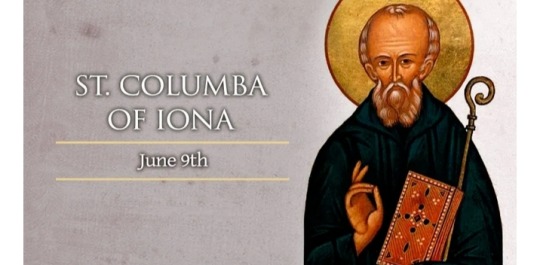
On June 9, the Catholic Church commemorates the sixth-century Irish monk and missionary Saint Columba of Iona, also known as St. Columcille.
One of Ireland's three patron saints, together with Saint Patrick and Saint Brigid, he is also sometimes called the “Apostle of the Picts” for his evangelization of Scotland.
He should not be confused with St. Columbanus (or Columban), a different Irish monk and missionary who lived slightly later and ended up in Italy.
Columba was born during 521, descended from royalty through his father. He was taught and mentored by the priest who baptized him and later attended a monastic school founded by Saint Finnian of Moville.
His own life as a monk began at the school, where he was also ordained a deacon.
The deacon went on to spend time in a different monastery and school run by another Finnian, Saint Finnian of Clonard.
Columba became a priest during this period, and along with eleven others from this same institution, he would become known as one of the “Twelve Apostles of Ireland.”
Columba also studied with Saint Mobhi of Glasnevin, before a disease epidemic forced him to return to his ancestral homeland of Ulster during 544.
He spent the next 15 years traveling, preaching, and founding monasteries.
It is not clear why, in 563, Columba left Ireland. By some accounts, he was simply going to preach the word of God.
Others claim that he had become involved in a battle between warring tribes, before repenting and taking on foreign missionary work as a penance.
On the island of Iona, located on Scotland’s northwest coast, Columba and his group of companions built simple monastic quarters and a church for themselves.
The priest-monk’s first missionary work was in the region of Dalriada, whose Celtic Christian inhabitants were lacking solid religious instruction.
His next effort was to convert the Picts of northern Scotland, a task that would take up most of the rest of his life.
He began by gaining entrance to the castle of King Brude, where the locked gates are said to have miraculously opened when the sign of the Cross was made.
The king welcomed the missionaries, believed the Gospel, and was baptized.
Columba’s evangelization of northern Scotland continued over the next three decades.
He and his companions met with some resistance from the native pagan Druids, but on the whole, they found remarkable success in spreading the Catholic faith and building up a network of churches and monasteries.
The island monastery at Iona remained his home base. It drew pilgrims looking to benefit from the priest-monk’s wisdom and his prayers.
He remained in touch with the Irish Church, making many trips back until he became too weak to travel.
Even in old age, Columba maintained an intense routine of prayer, fasting, and study.
After giving a final blessing to his monastery on 8 June 597, he died sometime in the early hours of the following day.
#Saint of the Day#Saint Columba of Iona#St. Columcille#Apostle of the Picts#Twelve Apostles of Ireland
6 notes
·
View notes
Text

@lyon-beast-king
What a headache this situation was turning out to be.....
Having just moved the rest of their stuff stuff from Castrum Lacus Litore and the temporary headquarters they had been using to the recently arrived Dalriada, Menenius sighed out since it had been more then busy, it had been hectic due to the fact that Albeleo was no more meaning the mages fell under the command of Fabineau quo Soranus. Then from the combination of Noah’s ire cause of losing Lacus Litore, Lyon losing Dawon the first and an assortment of his creatures under his command, plus not to mention the mountains of paperwork..... yeah one could say that it was a shitty situation. Honestly he thought he had everything planned out but this was going from bad to worse and he knew that the resistance were celebrating something.
However the ship did buy them a small amount of time and with everything he could have done for the day, and knowing that he’ll be updated throughout the night just in case, Menenius decided that he would go visit the Beast King as he stood up and sighed. Thankfully he had already changed out of his armor earlier and was wearing more lighter clothes though enough that he could still slip into his tribunus armor if needed. He hadn’t exactly memorized the ships layout yet but he knew the way to Lyon’s room with ease and having soldier’s pass him along the way, he did the usual garlean salute back before moving on.
Having the master key, thanks to Sicinius and the other engineers, Menenius used it to unlock the Beast Master’s room as the whiff caught his nose which made him sigh since really Lyon, already? But stepping in as the door closed behind him, he heard noises coming from behind the wall and well well, this made the younger smile a slight bit as Lyon was fast asleep but clearly Dawon... the second he believed wanted attention from the sleeping hyur as Menenius spoke up to the griffin.
“I believe he would want you to go rest up like he’s doing.” When did he start going soft for the damn griffin’s?
#Lyon-beast-king#{The mighty King of Beast still a major pain in the ass}#canon verse#Menenius Sas Lanatus#[{The enemy might be ruthless but the serpent is deadlier}]
13 notes
·
View notes
Note
I wanna expand my musical horizons, gimme some recs of your favorite songs?
Alright, sorry I'm getting to this so late! Because I'm a nerd (and because my favourite by them isn't one I suggest to new listeners), I'll recommend a Rush song from each album:
Here Again
Beneath, Between, and Behind
Bastille Day
2112
A Farewell to Kings
La Villa Strangiato
Natural Science
YYZ
The Weapon
The Enemy Within
Mystic Rhythms
Force Ten
Presto
Leave That Thing Alone
Bravado
Time and Motion
Peaceable Kingdom
Far Cry
BU2B
Now, for just my favourite tunes from other bands (granted, some bands I can't pick a favourite, so I'm just going with what pops up first in my mind):
Yes - The Gates of Delirium
Genesis - Supper's Ready
Emerson, Lake, & Palmer - Karn Evil 9
King Crimson - Starless
Ghost - Deus in Absentia
Powerwolf - Dancing with the Dead
Gojira - Global Warming
Korpiklaani - Juodaan Viinna
Elvenking - Moonbeam Stone Circle
Týr - Ride
U2 - Zooropa
Mastodon - Sickle and Peace
Amon Amarth - Cry of the Black Birds
Billy Talent - Horses and Chariots
Klaatu - Little Neutrino
Pink Floyd - Welcome to the Machine
Rammstein - Weit weg
Dalriada - Áldás
Dark Tranquillity - Empires Lost to Time
Finntroll - Mask
Gloryhammer - Rise of the Chaos Wizards
Haken - The Cockroach King
Huntress - Zenith
Igorrr - Unpleasant Sonata
Iron Maiden - Satellite 15
Jack Stauber - Two Time
Ministry - Jesus Built My Hotrod
Porcupine Tree - Collapse the Light into Earth
Radiohead - Give up the Ghost
Stratovarius - Elysium
Soen - Jinn
Swans - Blood Promise
Skeletonwitch - Fen of Shadows
System of a Down - Holy Mountains
Tool - Culling Voices
And there we go! Hope that isn't too much, haha
2 notes
·
View notes